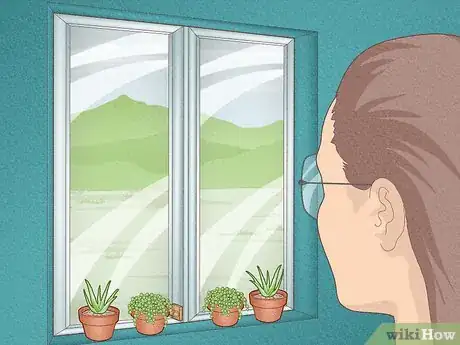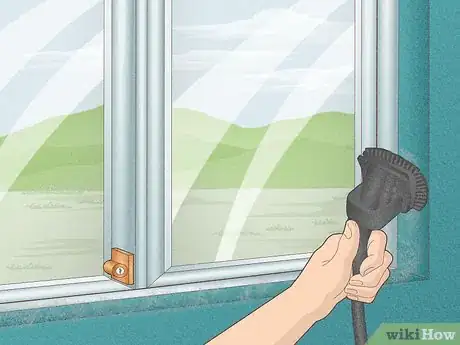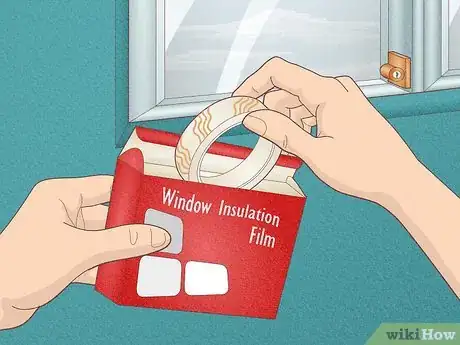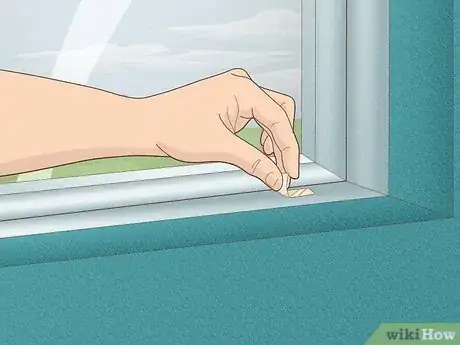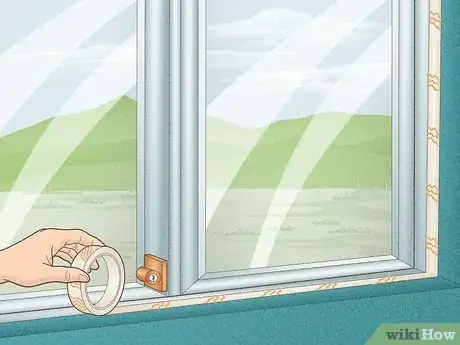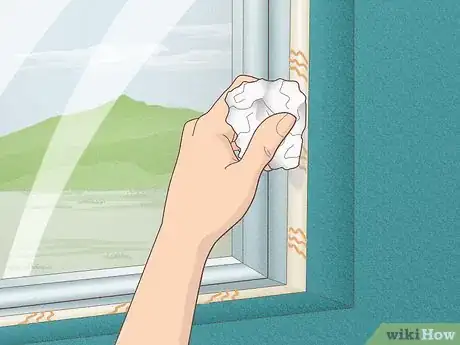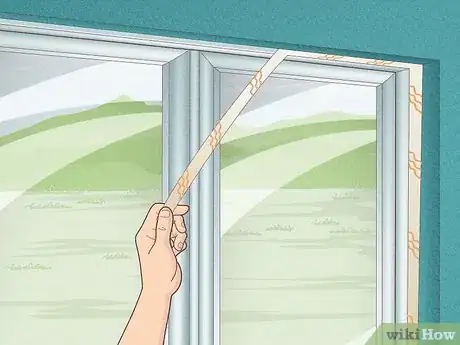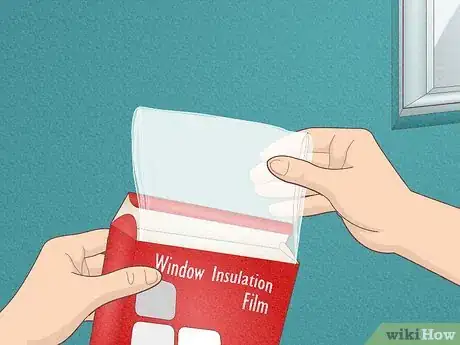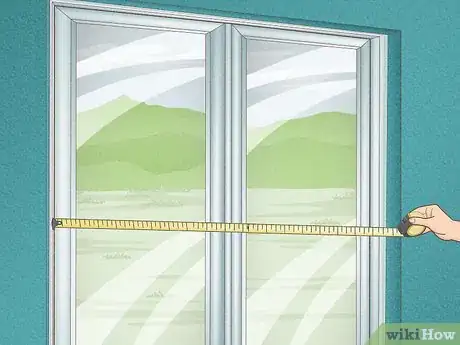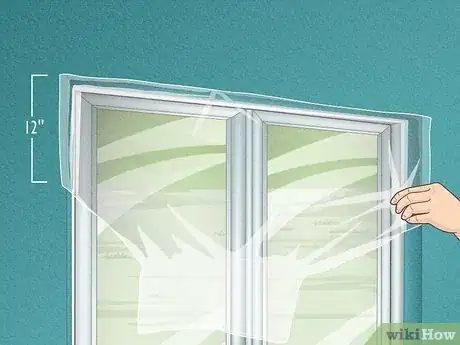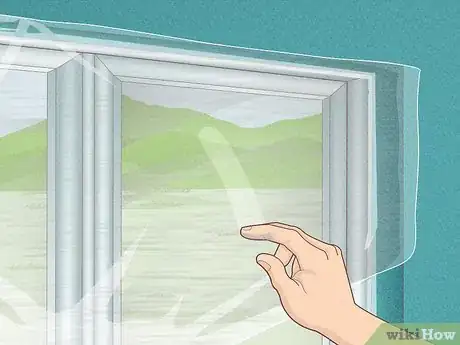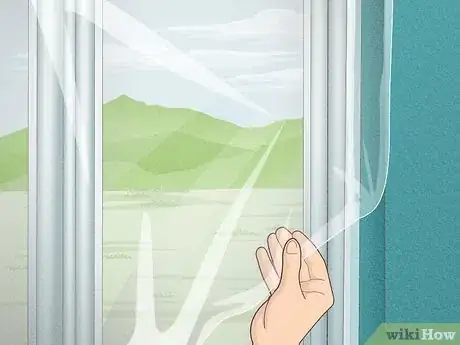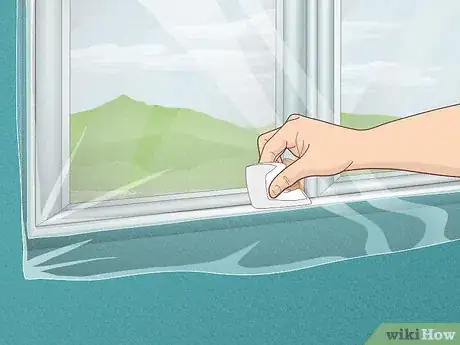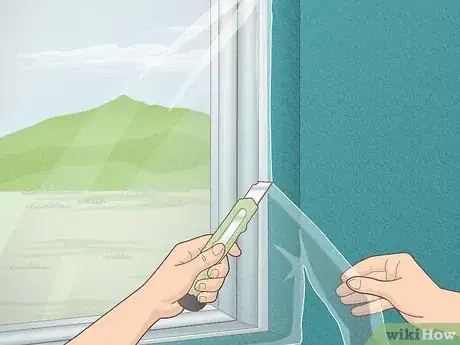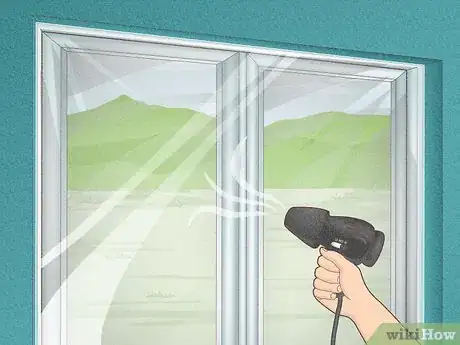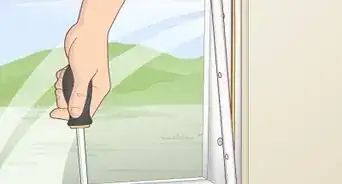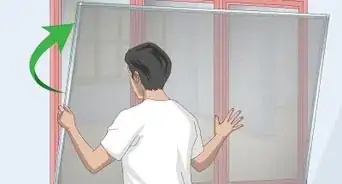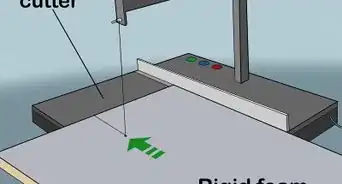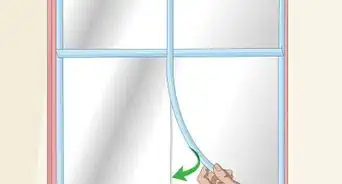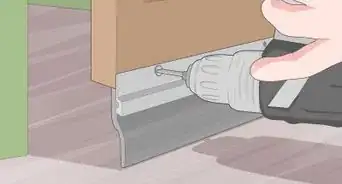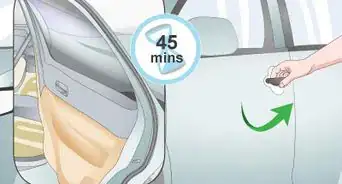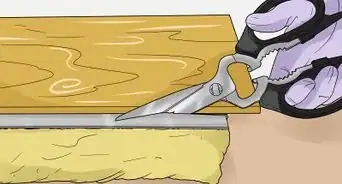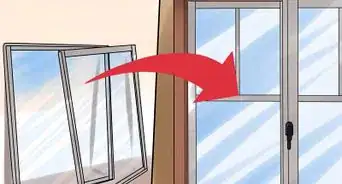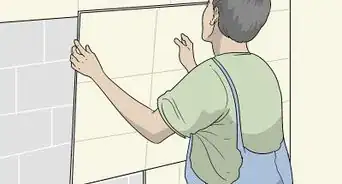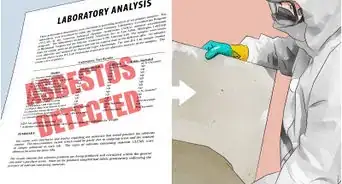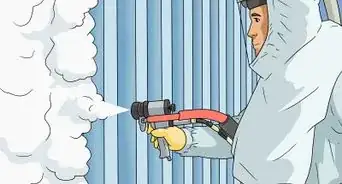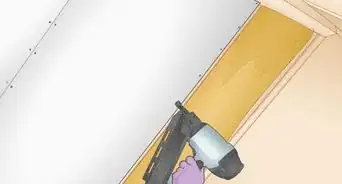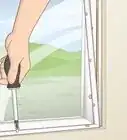This article was co-authored by Garrison Hullinger. Garrison Hullinger is an Interior Designer and the President of Garrison Hullinger Interior Design (GHID). With more than 15 years of experience, he specializes in client-centered design that balances beauty and warmth with comfort and functionality. Garrison and GHID’s work has been featured in numerous publications such as The New York Times, The Wall Street Journal, and Interior Design Magazine. Garrison attended Oklahoma Christian University.
This article has been viewed 174,903 times.
A lot of good money goes right out the window. Not anymore. If you follow the advice in this article, you will keep the energy in your house and the money in your pocket by installing window insulation film.
Steps
-
1Understand window insulation film. The window insulation film this article discusses, and which most hardware stores carry, is heat-shrink film stretched across the interior window frame to form a bubble that blocks drafts and disrupts convection of the indoor air mass across the too-cold (or too-warm) glass. Window laminate films that stick directly to the glass like automotive window tint, to shade, insulate, and reinforce, are very different.
-
2Choose windows to insulate. You won't be able to open the window without removing the film, so leave at least one window near the kitchen uninsulated in case you have to air it out after burning food. You may want to leave windows on opposite ends of the house uninsulated to open them for a breeze when the weather is nice if you don't want to re-insulate each winter. You won't be able to reach window blinds after applying insulation, and a lack of opaque window covering lets a lot of heat radiate in or out, so don't apply insulation where blinds are involved unless you have curtains to shade the window at night or want the blinds permanently closed or mostly-closed (perhaps angled to let some light in at an angle without being able to see straight through). A window that will be brushed against frequently is also not a good candidate because the film and its tape attachment are not very strong.Advertisement
-
3Prepare windows. It's most efficient to insulate all you want to insulate at once. Remove debris from around the lower sash, close the window, lock it, clean the window and frame, and clean and adjust the blinds if any (a vacuum works well for light dust on them). Allow the window and frame to dry.
-
4Open the box of window insulation film and take out the tape. Just use fingers, not sharp objects, to open the box, lest you damage the bundle of film inside. Leave the film itself for later.
- If you run out of tape, tell the manufacturer you ran out and need more. It will likely be sent for free. The long rolls of double sided tape that is fairly weak so as not to lift paint are not widely available to buy on their own.
-
5Test tape adhesion.
- Stick a small piece of tape onto the frame.
- If the tape pulls off very easily, there is moisture or grease on the frame.
- Clean off grease with a rag and residue-free solvent such as methylated spirits or white spirit (apparently common in the UK) or rubbing alcohol (common in the US).
- Wipe off moisture and use gentle heat to evaporate away any that remains. Turn up the thermostat several degrees, or operate a space heater in the general area of the window. Make sure any humidifier has been turned off and you haven't boiled or washed anything with hot water for a few hours.
- Metal frames are more difficult. It is harder to remove the moisture from metal framed windows because the cold metal attracts fresh moisture very quickly. Metal frames must be smooth; any loose paint or rust should be removed. Just use a plastic brush to scrub off the excess; leave marring them more or exposing more of a vulnerable surface for repainting time.
-
6Apply the tape to the frame. It goes on the front of the molding and on the sill right in front of the vertical moldings. Put it just inside a ridge on the molding, if the style has one, to keep it straight and protected by the molding edge. Cut an end in the proper place with a scissors before laying it down. When you finish one piece, rub down the corner and peel the backing paper about an inch (a few centimeters) to overlap it with the next piece. Be careful not to touch the sticky side or the frame area where the with your fingers because this creates a layer of grease which reduces the adhesion.
-
7Rub down the tape using firm pressure. (Use a couple of scrunched up paper kitchen towels.)
-
8Remove the backing from the top piece and about six inches from each side piece at the top end.
-
9Unpack the film. The film is thin and easily damaged by hard objects. It also has static cling, so keep it away from dirt and dust, preferably off the floor. If the package contains multiple sheets of film, unpack only one at a time; if the package contains one big sheet, consider how to position it on and trim it off each window for minimum waste.
-
10Think about how to best fit the film to the window. If you have individual window-sized sheets, it should be easy, but if you have very tall windows measure first. It may be a tight fit so you'll have to leave narrow margins, or even extend the film to reach the full length. You can splice sheets with the double-sided tape, or even extend them a little with wide clear mailing tape (which could possibly lift paint). These imperfect fixes are more easily hidden at the top of the window after attaching the film from the bottom up than at the bottom after attaching the film top-down as usual. If you have one huge sheet, or a part of it left over after insulating a set of windows or sliding glass door, it may be more efficiently used the "wide" way across the wall rather than the "long" way.
-
11Unfold the first 12 inches (30.5 cm) of film along the entire width of the window. Leave the remainder of the film stuck together. The film is tightly stuck together because of static and can be tricky to separate. If it won't separate easily, moisten thumb and fingers and rub the edge of the folded film film gently between them until it separates. (This can take a little while and you will notice that the friction increases until the film separates.) The folded edge can be recognised because it is a bit crinkly when the film is laid flat. Do not unroll the film before applying it because the inside surfaces facing the glass will immediately start to attract dust. Stick the top edge of the film to the tape, centering the film side-to-side so there is a little excess on each side.
-
12If the bundle of film is dusty, put the dusty surfaces on the outside, toward the room, so they can be cleaned off. To do this, present the window insulation film to the top of the frame as you unfold it such that so that the clean inside surfaces that emerge as you begin to unfold face the window.
-
13Work down the window attaching the film. Unroll about six inches at a time from the bundle of film, peel the tape backing paper off (or pull it off all at once), and stick the film to the tape. Keep the sides slightly taut and even from side to side. Wrinkles are OK: they will be removed later.
-
14Peel off the last few inches and the bottom tape while holding the film away from the tape with the other hand. Attach the bottom of the film. Do not pull the film tight; rather, push in on it a little to make sure it sticks to the full width of the tape across the sill, including at the corners. This is a common weak point because tension tends to pull the film up off the tape on the sill, rather than straight across it as with the tape on the other molding.
- If the tape comes off the sill later, you can fix the problem with clear mailing tape (which doesn't look quite perfect and can lift paint).
-
15Carefully rub down the film onto the tape all the way round. Do not use a hard object. A clean cloth would work well.
-
16Trim the excess film with a snap-off knife. Pull very gently at the film where you are cutting it to keep it perpendicular to the window and tape, and, holding the knife parallel to and pointing away from the center of the window, trim the excess film a fraction of an inch (less than a centimeter) from the edge of the tape. This eliminates a need to scrape the window frame near the tape. Holding the knife swept back so that the film sweeps by as it cuts rather than bunching up at a single point on it will cut more smoothly. Care is needed because the film can tear across the line of the tape. The small excess of film will curl up even further when heat is applied and not be noticeable.
- Be very careful to stand so that you would not fall onto the window if you fall, and to extend the knife very little and hold it so that you would be unlikely to cut yourself badly in case of an accident.
-
17Use a hair dryer to shrink the film, removing wrinkles. Hold it a few inches away; you'll see the film begin to shrink. Closer will not work better: it'll just reduce the airflow, potentially overheating the dryer or damaging the film. Work in a pattern, for instance, a spiral from the corners towards the centre. Shrinkage in one space will remove wrinkles all over. Don't try to shrink one area enough to remove all wrinkles before proceeding to the next. That will cause uneven tension and, possibly, separate the film from the tape.
- If the hair dryer turns off on its own, it has probably overheated. It probably has a thermal protector that will reset itself if the dryer is unplugged and allowed to cool for up to a half-hour.
Community Q&A
-
QuestionWhen should I install window insulation film?
 Community AnswerMid to late fall. Make sure it's before winter as the cold will produce more moisture!
Community AnswerMid to late fall. Make sure it's before winter as the cold will produce more moisture! -
QuestionIf I want to reuse the film, can it be 'relaxed' in any way?
 Community AnswerNo. Once the film shrinks, it stays shrunk. If you want to reuse the film, you can apply it carefully, stretching it to remove wrinkles and skip the hair dryer step.You can then remove the film and tape when warm weather returns. You will need to carefully fold the film and put in a container to keep it clean. I have tried this and have not been pleased with the results; better to just get new each season.
Community AnswerNo. Once the film shrinks, it stays shrunk. If you want to reuse the film, you can apply it carefully, stretching it to remove wrinkles and skip the hair dryer step.You can then remove the film and tape when warm weather returns. You will need to carefully fold the film and put in a container to keep it clean. I have tried this and have not been pleased with the results; better to just get new each season. -
QuestionDoes the film stick to my window?
 Community AnswerIt covers the window to create an extra protective layer from droughts, and an extra layer to keep heat in.
Community AnswerIt covers the window to create an extra protective layer from droughts, and an extra layer to keep heat in.
Warnings
- Do not pull the film tight. Just concentrate on avoiding creases crossing the line of tape.⧼thumbs_response⧽
- Some people use the electric fan heater to speed up shrinking but obviously this cannot be recommended because it could be dangerous.⧼thumbs_response⧽
Things You'll Need
- Snap-off knife
- Methylated or white spirit or rubbing alcohol
- Window insulation film kit

